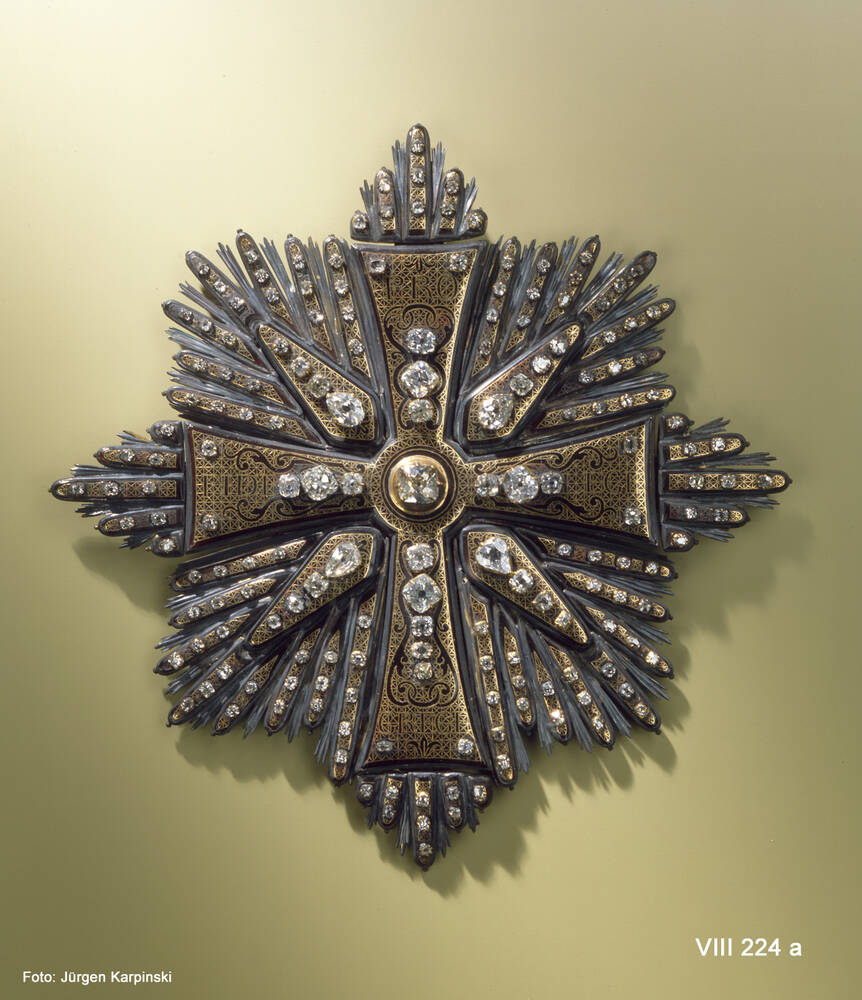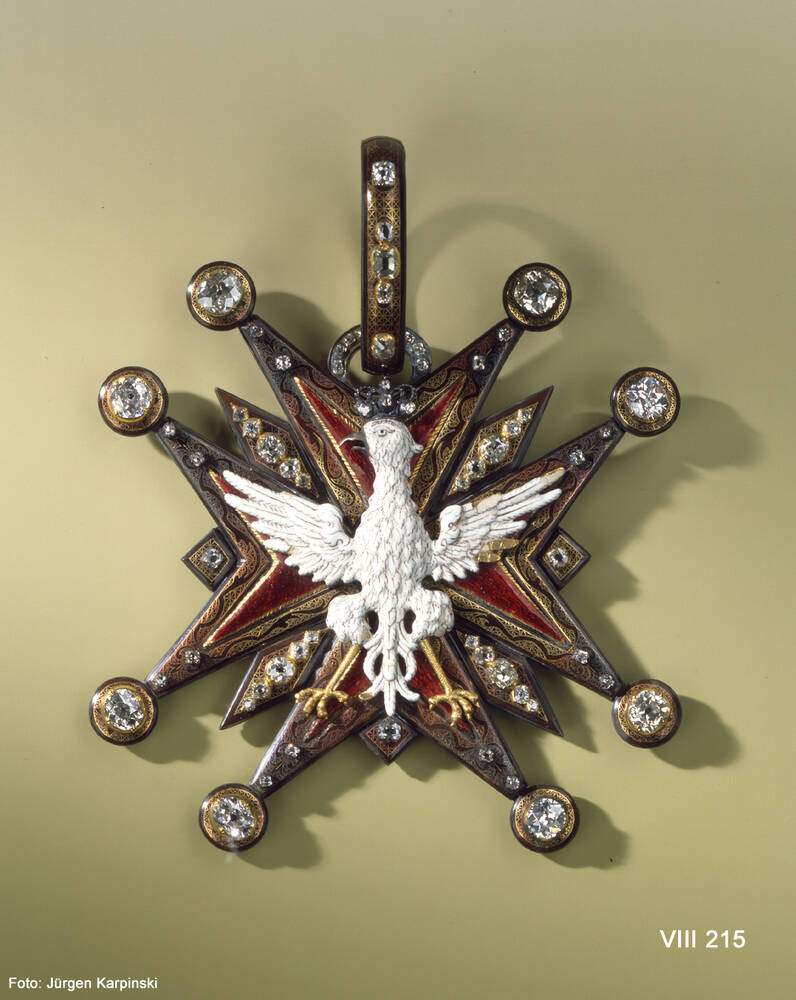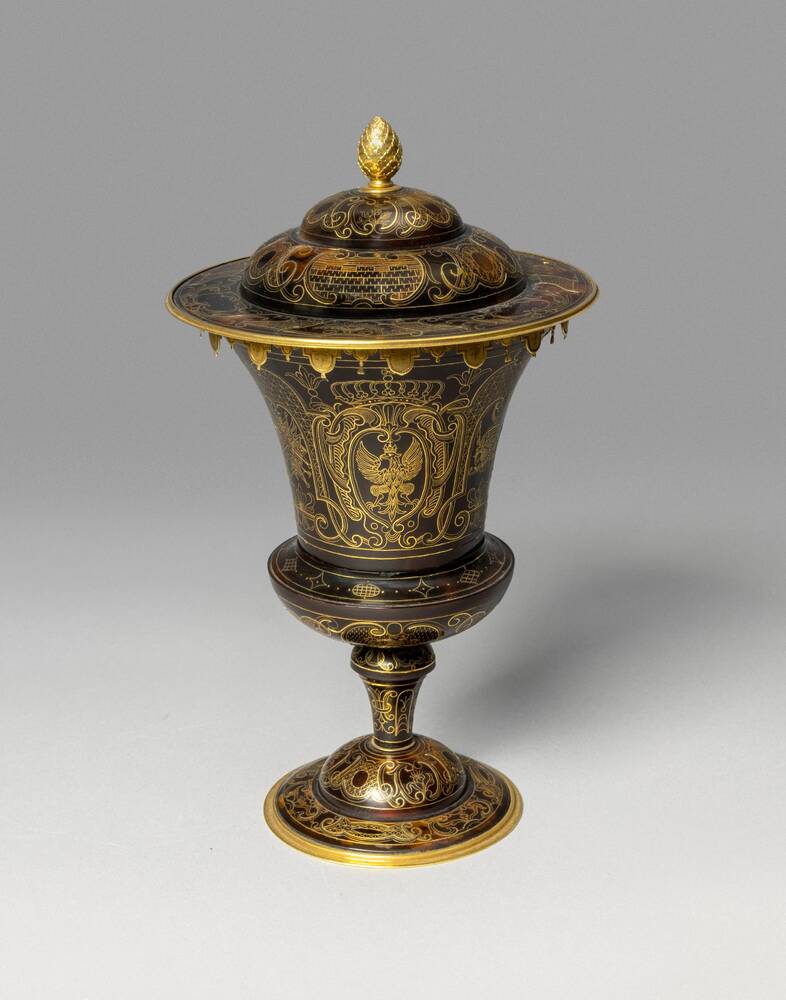The star and badge of the Polish White Eagle Order are part of the Tortoiseshell Set– the tenth (and last) Jewel set that August the Strong acquired. Although some of the diamonds were removed from the set to conform to changing fashions, the badge and the star of the Polish White Eagle Order, which is pinned above it have survived unchanged.
The exceptionally fine craftsmanship was the work of Pierre Triquet, a tortoiseshell specialist. Here he has used the “piqué-posé” technique, which involves setting extremely thin strips of gold – as it were, “on end” – in the tortoiseshell. Small metal pins, sunk into the shell, create accents in the form of bright dots.
The decoration of the tortoiseshell with gemstones was carried out by the Saxon court jeweller Johann Heinrich Köhler. The three-dimensional eagle with painted wings was also produced in his workshop.
The matching star was created at the same time as the badge. The Maltese Cross is made to glow, with four stylised flames in the corners. This is a masterpiece of the jeweller’s art. A large, square, very regular diamond, with the classic 18th century brilliant cut, forms the centre of the star. The diamond setting is subordinated to the severe and majestic cross.
In 1715, August the Strong revived the traditional Polish White Eagle Order, which hadn’t been awarded for a long time. By making aristocrats in Poland and Saxony members of the order, he sought to strengthen their ties to the Wettin dynasty. This was necessary because the so-called Northern War was going badly. The Great Northern War* was fought between a coalition of Russia, Denmark-Norway and Saxony, on the one side, and Sweden on the other, from 1700 to 1721. During the conflict, other nations joined in. One result of the war was the end of the Swedish Empire.



